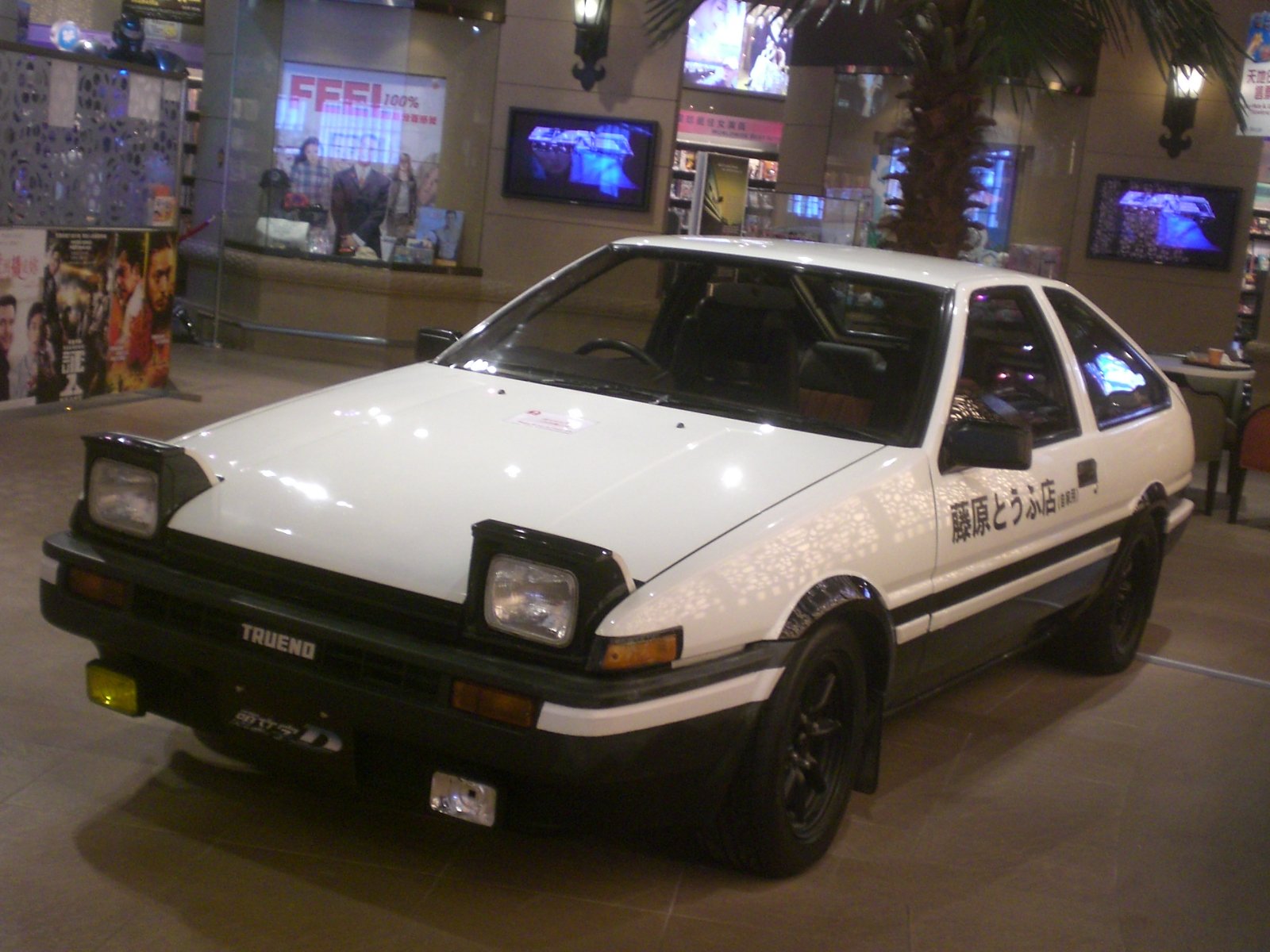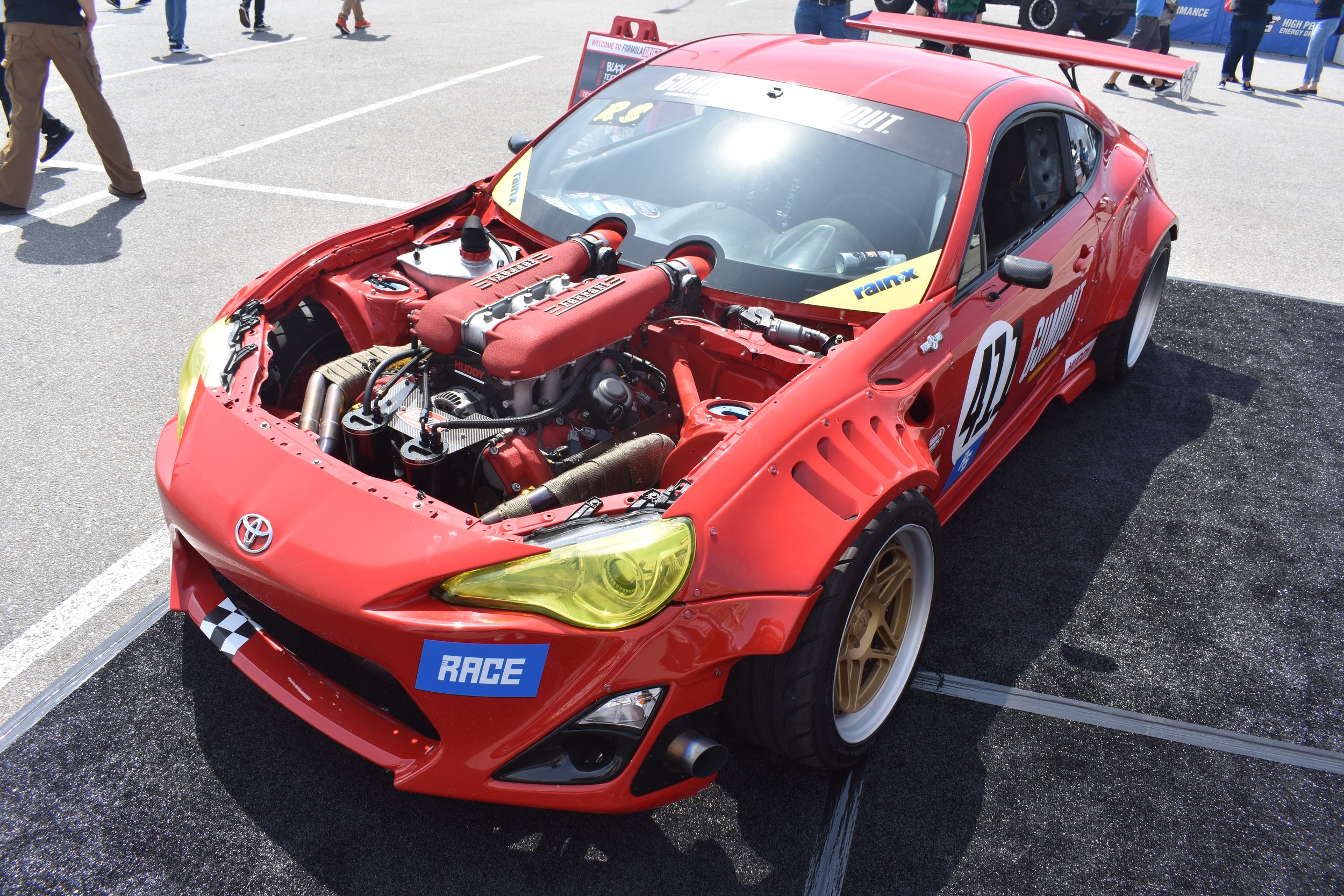RIDING THE WALL
Photo courtesy of Drift Enthusiast Magazine
BRANDS DRIVING THE COMMERCIAL DRIFTING INDUSTRY.
When you think about motorsports in general, it’s not hard to make a mental leap to all the brands that support them. In fact, the minds of most fans go instantly to the cars, their sponsors, and even the standout personal driver brands that add all the color to an automotive sport.
The sport of drifting is no exception, but its popularity developed a bit differently than most traditional motorsports in the world. Therefore, its brands have evolved uniquely as well.
Let’s Start With The Cars.
The concept of drifting originated out of the Japanese Domestic Market (JDM) and street-racing culture. In the beginning, it was largely a non-competitive sport of fun. However, it quickly evolved into a competitive sport in Japan and elsewhere, gaining the attention of spectators and other car enthusiasts across the world.
“If you like watching cars making awesome noises and doing spectacular things, then hop on YouTube and watch some international drifting. I suspect you’ll be impressed,” wrote journalist Scott Newman in one Motor Magazine feature covering the drifting motorsport.
As the sport continued to grow into a more structured competitive program, so did the vehicles. Over time, a landscape that had once been exclusively Japanese driving machines, became dotted with USDM (United States Domestic Market) and Euro cars.
Eventually, anything that ‘could’ drift competitively was being put to the test, and chassis like the Ford Mustang, BMW 3 Series, and even the Chevrolet Corvette were rising up in the car community as being ‘drift-worthy’ vehicles next to their JDM counterparts.
This phenomenon began to influence the way a few of the automaker racing divisions viewed their next chassis release. It also radically changed the price tag of vintage drifting machines in the after market. Today, this shift in value is called ‘drift tax’. A term that refers to the higher price a buyer has to pay when purchasing any drift-ready automobile.
In a post by Drift240.com, drift tax is explained as follows, “The simplest answer is that the ‘drift tax’ is just a specific case of supply and demand, as there were only a certain number of a car (for example the AE86) produced. Without new supply, the market sucked up all the cars, and people are willing to pay more for the fewer cars. People continue to crash these, blow motors, and otherwise irreparably damage them. These cars are quite literally a dying breed, and that skyrockets the price of the remaining few.”
The bad news is Drift240 makes a critical point about these popular JDM cars dying off. The good news is our friends in the pro circuit are finding ways to continue expanding the drift-car horizon and they’re proving cars like Matt Field’s C5 Corvette, Dean Kearney’s Dodge Viper, Taylor Hull’s Cadillac ATS-V, and all the newer Mustang generations can perform with the same amount of verve and excitement as the traditional Mazda, Nissan, and Toyota models we are used to seeing at the grassroots tracks.
So, when you think about it, the sustainability of the drifting motorsport is going to be dependent on the automobile industry’s continued backing. This is why companies like Ford, and their illustrious racing division are now backing professional drifters, and a few of the other automaker brands are starting to follow suit.
Drifting Inspired Entertainment Brands.
If you’re a diehard fan of drifting, there’s a high chance you’ve seen Initial D, the Japanese street racing manga series written and illustrated by Shuichi Shigeno. If you haven’t been introduced to Initial D yet, you’re missing out!
Of course, this is only one of the many entertainment channels and brands that have either influenced or risen out of the popularity of drifting, and contributed to its ever-growing mainstream culture.
Gamers are having a blast drifting virtual cars in video games such as Forza and Assetto Corsa, while also collaborating with like-minded people across the globe that are just as enthusiastic about the sport as they are. And, like any type of enthusiast-driven activity, their buy-in to these brands is lending credence to the sport itself, its unique community of influencers, and all the other brands that support it.
Of course, the world of drifting wouldn’t be as cool as it is without entertainment brands like [Hoonigan] and the expanding group of YouTubers that have devoted their channels to the sport of drifting cars.
In fact, when Ken Block and Brian Scotto launched the Hoonigan brand in 2010, not only did it create a legit way for U.S. drifting enthusiasts to embrace the edgy side of the sport, it literally created instant respect within broader automobile and racing networks.
Photo courtesy of Drift Enthusiast Magazine
So much so, Block’s Gymkhana vehicles are now iconic staples inside the Forza world, and traditionalists in the auto industry (such as the Petersen Museum and Hot August Nights) have paid tribute to the sport by showcasing drift cars, teams, competitions, and driver brands.
After the influence of Hoonigan Industries turned the sport of drifting cars around in the minds of the mainstream world, a million doors flew open for a wider network of drift-focused drivers, tracks, sponsors, manufacturers, and entertainers to get their brands into the game.
One example was Adam LZ’s conscious shift to an all-exclusive automotive focus on his YouTube channel. Adam’s charisma, passion for driving, and overall balls have now earned him an unforgettable drifting entertainment brand that fans still flock to today, and coveted seat in the professional drifting circuit.
In the end, drifting will always be a fan’s motorsport, and there would be no commercial drifting industry without the influence of its entertainment brands.
Professional Drifting Competitions And Organizations.
Photo courtesy of Drift Enthusiast Magazine
Likewise, professional drifting competitions across the globe have added a huge boost to the commerce of drifting.
Japan’s production-car D1 Grand Prix (D1GP), and its offshoots in other countries like the United States, United Kingdom, Malaysia, and New Zealand have literally transformed the Touge (峠, tōge) street racing model from Japan into a widely-recognized and followed professional motorsport.
In August of 2003, the D1GP came to the Irwindale Speedway in California, and as the saying goes, “That’s all she wrote!”
As Formula Drift highlights on its FD101 page, a professional U.S. competitive drift circuit was formed and announced at the 2003 Specialty Equipment Market Association (SEMA) event, with the first season forecasted to launch early the following year.
FD’s opener was hosted at Road Atlanta in February 2004, and after nearly 20 years of Formula D, the U.S. professional drifting circuit is still going strong. Additionally, Formula D launched the FD Asia Championship in 2009, took the sport to the Persian Gulf in 2011 and Canada in 2014, and the FD Japan Championship was also created in 2015. Nice run, guys!
Of course, much like other legacy motorsports, aftermarket parts manufacturers started to sponsor drifting events and driver brands, amplifying the influence of pro drifting on the commercial side of the sport even more.
Today, many of these manufacturers are bona fide drift enthusiasts themselves, and their influence in the sport has led the industry toward new manufacturing, supplier, distribution, and merchandise brands that would never have happened or become successful in the motorsports marketplace without the introduction of competitive drifting.
Tuning On Steriods.
Photo courtesy of Drift Enthusiast Magazine
This leads us to the tuner community (which has obviously been around far longer than anyone drifting a rear-wheel-drive vehicle for sport has), and how the rise of drifting has completely morphed the way many tuners and tuner brands look at cars.
Drifting not only requires a different style of automobile than traditional racing sports, it also requires different setups, and a unique tuning mindset. Everything including wheel placement, the type of tire used, what it takes to enhance steering and brake components, and even the integration of outrageous body mods are all integral aspects of the sport of drifting. And we’re not just talking about the competitive level.
Whereas, the ‘race it, break it, fix it’ weekend racing mentality is a drifter’s waking and sleeping mantra, the practice of ‘outfitting’ a drift car for this type of ultimate driving (not to mention the aesthetics), has given OEM’s (original equipment manufacturers), aftermarket distributors, and mod shops across the world a chance to make bank.
In fact, ask any drifter what they’ll be spending their extra paycheck on, and chances are they’ll name a car part, body or interior mod, multiple sets of drifting tires, or even industry-branded merch they’re dying to incorporate into their own personal drifting style.
And though this culture and mindset has been around for eons - especially in the motorsports racing and vintage auto communities - never before has there been an automotive-related sport or interest that lured the pocketbooks of young gearheads like drifting and its JDM roots have.
Sponsors in the U.S. tuning world recognized this phenomenon as a forward-thinking marketing opportunity, and as they stepped up to fund the sport, young tuners everywhere did not disappoint. Characterizing the marvel of drifting perfectly in an article titled ‘Drifting and its Rapid Growth in Popularity’ published in the March 2021 issue of Grassroots Motorsports, Scott Lear wrote, “Drifting was seen as an adrenalized expressway to the youth market.”
Brands Outside The Zone.
We like to think of these brands as the brands that don’t have anything to do with drifting a car, but drifting cars has everything to do with them :)
As with any up-and-coming market or commerce-driven industry that experiences a fast and furious injection of serious buying potential, the industry behind the drifting motorsport is reaching well beyond its core brands.
Aspiring entrepreneurs, pre-existing venues, educational institutions, and even nonprofit organizations are finding creative ways to enhance and capitalize on the ‘business’ of drifting.
The list is too long to cover here, so we’ll be profiling many of these sideline brands over time in later Drift Enthusiast editions, but here’s a taste.
This group includes everything from ‘off-the-beaten-track’ places like Cleetus McFarland’s Freedom Factory USA and Drift Evolution, to amateur drifting organizers like USDrift, Klutch Kickers and Drift Kitchen. There are also a growing number of precision driving schools all over the world that now teach students how to expertly drift a car, and a host of automotive-centered trade and design schools are even getting on board.
Each of these brands have either modified an existing business model to include drifting-related products and offerings, or they’ve launched an entire startup with a niche-focus on drifting.
Along this line, drift-focused art and artists are emerging everywhere in the world, and the drifting industry is spawning an ever-growing number of rad photography, cartoon, illustration, and computer-aided design collections. We’re excited to see more artists showcase their incredible talents, while also earning a viable income expressing themselves through the drifting industry.
That’s all we got for now, but as you can see, we’ve only touched the tip of the iceberg. We hope you liked our overview of the commercial side of drifting and will take a quick minute to send us your comments, follow us @driftenthusiastmag, and tell your drifting friends about our exciting new media platform. We look forward to hearing from you and meeting every one of you at an upcoming event.





